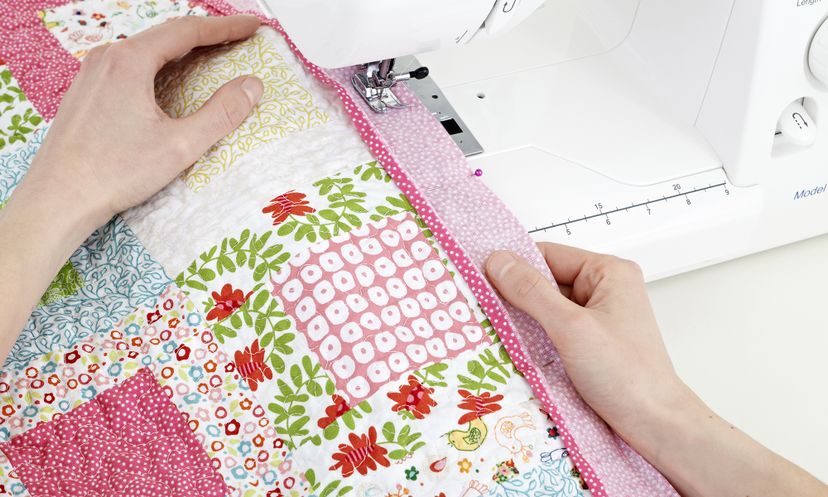
About This Quiz
Many of us probably think of Quilting as the quintessential American craft. You might be surprised to know, then, that the oldest quilted piece on record was discovered pretty far from the United States -- on the other side of the world, in fact. But since then,Quilting has taken on a distinctly American character. And there's a lot of lingo that goes with it, of course. You don't have to know your sharps from your milliners to do well on this quiz, but it would probably help.Quilt comes to us by way of the Latin word 'culcita,' which means 'cushion.'
The quilted carpet was discovered in a cave tomb in Mongolia.
Quilts have three layers -- the quilt top, the batting and the backing.
Advertisement
Rotary cutters are essential quilting tools -- they're basically a razor-blade wheel with a handle.
It's very important to use a gridded non-slip ruler -- NOT a regular straight ruler -- with a rotary cutter.
Basic cotton is how you should start out -- it's the easiest fabric to work with.
Advertisement
Most quilters do prewash their fabric to eliminate any 'surprises' -- like bleeding and uneven shrinking -- that could ruin a finished quilt.
Cutting a little piece from the corners will usually prevent fraying.
A fat quarter is the basic unit in quilting. It's a quarter-yard of fabric that's 18 by 22 inches instead of the standard 9-by-44-inch cut.
Advertisement
Nope -- unfortunately, it's not that easy. The higher the size, the thinner the needle.
Betweens are short, sharp needles that are perfect for pushing through multiple layers.
Quilt seams always have a quarter-inch allowance.
Advertisement
You could try to do it yourself, of course, but a quarter-inch presser foot will ensure that you never stray from the norm.
You'll need a pair of fabric scissors and another for cutting paper patterns.
Legends abound about quilts being used to identify 'safe houses' on the Underground Railroad, but historians have yet to find hard evidence.
Advertisement
We do tend to think of quilting as common women's work during this time, but most women sewed to meet basic clothing needs. Until the Industrial Revolution, only the rich had time to make decorative quilts.
Crazy quilts, with their random assortment of patchwork pieces, were all the rage in the 1880s.
Crazy quilts aren't stuffed with batting. They were also made with fancier fabrics, so they were used more for home decoration than for bedding.
Advertisement
No, be very careful to keep the hand sewing thread out of the machine.